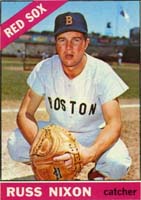CONTENTS
The Yankees Are Coming!
Red Sox Rally
Fatal Attraction
Blame It on Early
Know the Rules!
Shield Your Eyes, Dear
Batting Order Oddities
Historic Day at the Polo Grounds
In LF, What's His Name
Baseball Lore –
I
Baseball Lore – II
Baseball
Lore – III
Baseball
Lore – IV
Baseball
Lore – V
Baseball
Lore – VII
Baseball
Lore – VIII
Baseball
Lore – IX
Baseball
Lore – X
Baseball
Magazine
Top of Page
|
Bits of Baseball Lore - VI
The Yankees Are Coming!
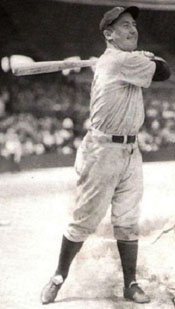
Snuffy Stirnweiss
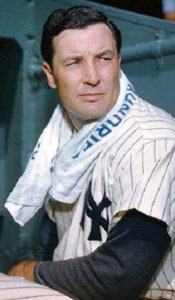
Joe Page
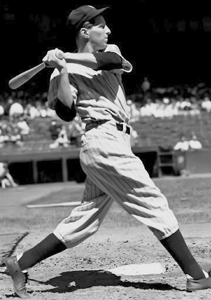
Tommy Henrich
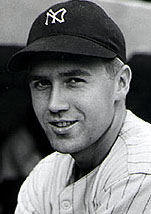
Bobby Brown
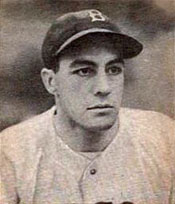
Johnny Peacock
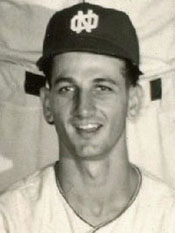
Mel Rue
|
The United States struggled to return to normalcy in 1946 after the surrender of Japan in September 1945 ended World War II.
- Baseball welcomed back over 500 former big leaguers who had served their country in the Army and Navy.
- Only a handful of members of 1945 NL and AL rosters would retain their spots for the following year. Most would return to the minor leagues, lifting the play at that level also.
The New York Yankees welcomed back their former stars led by Joe DiMaggio.
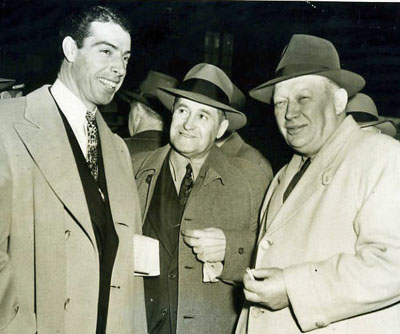
Joe DiMaggio, Joe McCarthy, Larry MacPhail The Yankees scheduled a two-game series at Pelican Stadium in New Orleans against the Crescent City's AA team for Saturday, March 30 and Sunday, March 31.
- Anticipation for the series increased when, four days before the Bombers were scheduled to arrive, Times-Picayune sports editor Bill Keefe revealed in his column that Word comes ahead of the New York Yankees that the entire first string crew, including Joe DiMaggio and all the other fence-busters, will be on hand Saturday and Sunday to meet the Pelicans.
- The Yankees split their squad for the final weeks of the exhibition season. The contingent coming to New Orleans, the "St. Petersburg squad," included all the projected starters except 2B Gordon as well as pitchers Spud Chandler, Joe Page, Johnny Murphy, and others.
- McCarthy would manage the team assisted by coaches John Schulte and Red Rolfe.
- Local fans were disappointed that Bobby Brown, the Tulane University medical student who signed with the Yankees in February for a $35,000 bonus, would play on the Bradenton Yank Team
The Pelicans, in their first year as a farm club of the Red Sox, were led by first-year player-manage Johnny Peacock, a 10-year major league C with the Red Sox, Phillies, and Dodgers.
- Peacock said, I wasn't here last year, but I gather from the players that our club is somewhat better this year. Last year, the Pels were fourth in the league. Because of the general improvement everywhere in baseball, we will have to be at least a third better than we were last year to hold our own. I think we will.
- The pitching staff, one of the best in the Southern Association in 1945, included five veterans - George Turbeville, Roy Sanner, Jesse Danna, Pete Hader, and Fred Wells.
- The infield consisted of Paul Fugit at 1B, bespectacled Vernon Thoele, acquired from Toronto, at the keystone sack; Mel Rue at SS, and Bobby Richards, recently out of the service, at the hot corner.
- Outfielders included base-stealing Tom Astbury, Paul Bruno, and Chuck Holly between them in center.
- Marcus Carrola would catch with Manager Peacock providing relief.
- The Pelicans warmed up for the Yankees by pounding out 16 hits against the Minneapolis Millers of the American Association Thursday night to win 9-5.
The Yankees arrived by air late Friday evening for the weekend games, both of which started at 3 PM.
|
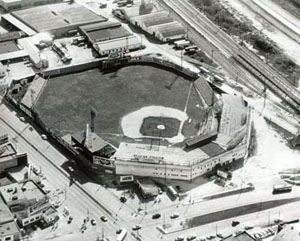
Pelican Stadium c. 1950s |
|
Yankees-Pelicans Starting Lineups March 30, 1946
| New York Yankees |
|
New Orleans Pelicans |
| Phil Rizzuto |
SS |
|
Mel Rue |
SS |
| Tommy Henrich |
RF |
|
Chuck Holly |
CF |
| Charlie Keller |
LF |
|
Paul Bruno |
RF |
| Joe DiMaggio |
CF |
|
Tom Astbury |
LF |
| Nick Etten |
1B |
|
Paul Fugit |
1B |
| George Stirnweiss |
3B |
|
Vernon Thoele |
2B |
| Oscar Grimes |
2B |
|
Robert Richards |
3B |
| Gus Niarhas |
C |
|
Mark Carrola |
C |
| Joe Page |
P |
|
George Turbeville |
P |
|
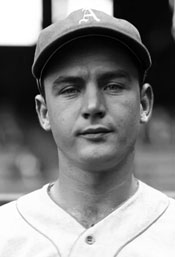
George Turbeville
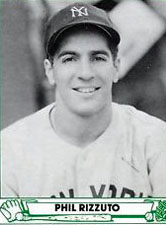
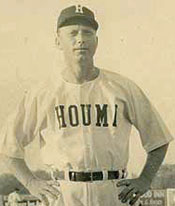
Roy Sanner
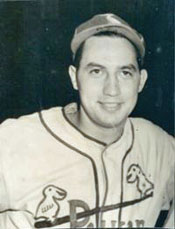
Jesse Danna

Bill Wight
|
First Game: Saturday, March 30, 1946
Bill Keefe started his Picayune article on the game this way:
Though kept from getting many hits for the simple reason that two Pelican pitchers weren't able to get the ball close enough to the plate to be hit by anything short of a wagon tongue, the New York Yankees did combine a few healthy swats with bases on balls Saturday afternoon and downed the locals 10 to 1 before a capacity crowd at Pel Stadium.
- If the 9,819 fans - the largest crowd to see the Yankees throughout spring training - came to see DiMaggio hit one out of the park, they were disappointed. However, he did smash two singles and walk twice against Turbeville, a former Philadelphia Athletic, Pete Hader, Jim Shea, and Vernon "Trader" Horn.
- Tommy Henrich, who played for the Pelicans from 1935-36 when they were part of the Cleveland organization, swatted a double and a single. The two-bagger bounced off the wall into the overflow crowd in RF. Nick Etten also had a double but the biggest hit honors went to Phil Rizzuto for his triple.
- The other former Pel (1937), Oscar Grimes, went 0-for-3 with two of the 15 free passes Pelican pitchers issued.
- Meanwhile, Joe Page pitched seven scoreless innings, yielding just one hit, a single by Mel Rue in the 6th. Ken Holcombe finished up and allowed an unearned run in the 9th. James Dawson wrote in the New York Times that Page's spring performance meant that McCarthy's dream of a workable, dependable left-hander is about to be fulfilled.
- When talking to reporters afterward, McCarthy referred to Henrich playing in New Orleans. You people will find Henrich much bigger than when he played with your Pelicans, and he gets more power now. Local reporters also asked Marse Joe about Tulanian Brown, who was with the Yankees "B" squad. Bob Brown can't miss. He's a good boy and a good ball player. Plenty savvy. He's plenty smart. He can hit for distance, and he'll soon be hitting even better. Since Joe was known to believe that a young player could learn more playing minor league ball than sitting on a major league bench, he was asked if Brown would be sent down. Not necessarily, Joe replied. I won't decide on my ball club until later in the practice seasons, and fellows we've brought with us here on the "A" squad do not necessarily rate above players on the "B" or Brandenton team.
- That night, McCarthy hosted a feast at Arnaud's Restaurant for the New York writers who had been with the club through its training in Panama and Florida. The idea came from new GM Larry MacPhail, who hadn't made the trip to the Big Easy.
Second Game: Sunday, March 31, 1946
An even bigger crowd - 13,201 - watched a much closer game.
- Roy Sanner, a former Dodger who worked the first four innings, and Jesse Danna, an ex-Giant who threw the next three, held the Bombers to four runs after the Pels hit lefty Bill Wight for two in the first. Three successive singles, the last a freak bunt that eluded C Ken Silvestri, preceded two infield outs that sent runners home.
Danna graduated from Jesuit High School in his native New Orleans. He also attended LSU.
- Fred Wells, who took the hill for the last two innings, made the mistake of giving DiMaggio a fat one that he deposited over the LCF fence to increase the lead to 6-2. Joe had actually been nicked by Wells's first pitch, and umpire Tiny Tessereau from the Ohio State League waved Joe to 1st. But Joe elected to stay at the plate, to the delight of the crowd. The roundtripper was his 14th of the spring. Wells explained afterward, He golfed that pitch when it was just about a foot off the ground. But what difference does it make where you pitch to guys who are like that?
- That allowed the Yanks to survive the two runs the home team plated off Cuddles Marshall in the bottom of the inning.
- Joltin' Joe also delivered a single and a ground rule double in four at-bats. Rizzuto, Grimes, and C Ken Silvestri had two hits apiece. Snuffy Stirnweiss had the odd line of 3 runs scored without a hit in three at-bats. On Silvestri's 5th-inning double into the crowd, a spectator was injured when Juan Sanchez crashed into him trying for a catch. The game was delayed while the fan was assisted off the field.
- The umpire at 1B, Charley Berry of the American League, set off the fans down the RF line in the 5th when he called Stirnweiss safe at 1st on what looked like a completed DP. When Berry turned to argue back with the fans, several local scribes expressed fear for his safety.
- When DiMaggio almost into the overflow crowd to pull down Tom Astbury's long fly that ended the game, Joe had to race for the clubhouse to elude a swarm of autograph seekers who chased him across the field.
Many locals remembered Joe's last appearance in New Orleans March 30, 1940, when he clouted two doubles and a triple in four trips.
- Joe Trimble of the New York News was asked whether the Yankees would be back in 1947. Sure, we'll be back next year. Don't see how the Yanks can afford to pass up this town when it outdraws any place on the spring tour.
- The Yankees left for Beaumont TX for a clash with the Texas League club managed by Jim Turner, who would become the Yanks' pitching coach a few years later.
The Pelicans would play the Cardinals the following Saturday, then the Dodgers the next day.
The '46 Yankees finished 3rd, 17 games behind the Red Sox and five behind the Tigers.
Joe McCarthy lasted only 35 games before alcoholism exacerbated by the pressure of working for MacPhail caused the demanding GM to fire him. Bill Dickey reluctantly took over and led the club to a 57-48 record. Then Johnny Neun took the helm for the last 14 games. The Yanks topped the league in attendance (2,265,512 - by far the most in team history) thanks in large measure to MacPhail's installing lights at Yankee Stadium just as he had pioneered night baseball at Cincinnati and Brooklyn.
The '46 Pelicans made a late push to take 4th place in the Southern Association with a 75-77 record and earn a spot in the Shaughnessy Playoffs against Atlanta. The Crackers prevailed in seven hard-fought games.
|
|
|
On June 18, 1961, the Washington Senators score five runs in the top of the ninth to take a commanding 12-5 lead in the first game of a doubleheader at Fenway Park. In the bottom of the inning, starter Carl Mathias retires 1B Vic Wertz on a groundout. Then things get dicey.
- SS Don Buddin singles to RF.
- Billy Harrell, pinch-hitting for P Ted Wills, strikes out. One out to go for the Senators with a 7-run lead.
- 2B Chuck Schilling singles Buddin to second.
- LF Carroll Hardy singles to CF, scoring Buddin and sending Schilling to 3B. 12-6
- CF Gary Geiger walks to load the bases.
- Washington manager Mickey Vernon replaces Mathias with RHP Dave Sisler.
- RF Jackie Jensen walks to force in a run. 12-7
- 3B Frank Malzone walks, forcing in Hardy. 12-8
- C Jim Pagliaroni hits a grand slam over the Green Monster to tie the game.
- Vic Wertz, batting for the second time in the inning, walks.
- Marty Kutyna replaces Sisler.
- Buddin singles to LF, Wertz stopping at 2nd. Pete Runnels pinch runs for Wertz.
- Russ Nixon, pinch-hitting for Harrell, singles to RF. Runnels scores the winning run.
The Red Sox score 8 runs with two out to win 13-12.
|
|
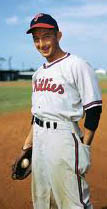
Eddie Waitkus
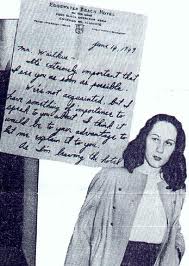
Ruth Ann Steinhagen
|
In 1949, 29-year-old Eddie Waitkus got off to the best start of his baseball career. After 54 games, the left-handed hitter was batting .306 for the Philadelphia Phillies and leading the All Star balloting for 1B. On June 14, the Phillies were in Chicago to start a series with the Cubs, the team that had originally signed Waitkus in 1939. After serving in World War II, Eddie played three full seasons for the Cubs before being traded to Philadelphia in December, 1948.
Unknown to Waitkus, he had caught the eye of a Chicago girl named Ruth Ann Steinhagen. At age 16, she started attending games at Wrigley Field and became obsessed with the home team's first sacker. She collected hundreds of pictures and newspaper clippings and built a shrine to him in her bedroom. Ruth's parents sent her to a psychiatrist to no avail. When Eddie was traded, the 18-year-old girl cried and said she didn't want to live. When the Phillies came to the Windy City the following June, Ruth decided it was time to meet Eddie.
Following the Phillies' 9-2 victory over the Cubs on June 14, Waitkus joined his roomate Russ Meyer and others for supper. When Meyer returned to their room in the Edgewater Beach Hotel about 11:45 pm, he found a note addressed to Waitkus from "Ruth Ann Burns" telling him she wanted to see him in room 1297. When Eddie came in a few minutes later, Meyer gave him the note. Ironically, Eddie had dated a woman named Ruth Ann and assumed the note was from her. So he went to the room. When Ruth Ann Steinhagen answered the door, she told him that the note's writer had stepped out for a moment and invited him in. After Waitkus sat down, Steinhagen went to the closet, pulled out a 22 caliber rifle, and shot him in the chest, stating that if she couldn't have him, no one could. Then she called the front desk, told them what she had done, and left. Without that call, Eddie would undoubtedly have bled to death.
Based on Waitkus's identification from his hospital bed, Steinhagen was charged with the shooting on June 30. She said she "wasn't sure" why she had shot Waitkus, adding "I'm not really sorry. I'm sorry that Eddie had to suffer so, but I had to relieve the tension I have been under the past two weeks." A jury found her legally insane, and she was committed to a mental institution. After receiving shock treatments, she was released in April 1952, less than three years after the shooting.
Waitkus underwent four operations before heading to Clearwater FL for rehab. Amazingly, he returned for the 1950 season, hitting .284 and scoring 102 runs to help the Phillies win their first pennant since 1915. Eddie played with Philadelphia through 1953, then joined Baltimore for a year and a half before finishing his career with the Phillies in the latter part of 1955.
Psychologically, Eddie went from being sociable and easygoing to reclusive and mistrusting after the shooting. Following his retirement, he was treated for alcoholism. He died in 1972 at age 53.
|
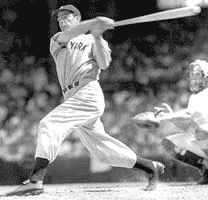
Joe DiMaggio
 Casey Stengel |
Joe DiMaggio retired at age 36 at the end of the 1951 season. Blame it on Early Wynn. Huh?
DiMaggio told Art Rosenbaum for a 1963 article in Baseball Digest:
He [Wynn] found out I was no longer able to hit the high inside fastball. After I broke my left collarbone, I wasn't able to bring my left arm around high enough to be ready for the tight pitch. ...
I didn't tell anybody, not even our trainer, that I couldn't come all the way around. I just hoped I could keep the secret. ... Well, Wynn threw one and then another and another. I couldn't just stand there, and he saw my grinding swing. I tell you, it didn't take more than a week for the word to get around the American League.
Joe had a history of injuries. In fact, he was damaged goods when he was bought by the Yankees from the San Francisco Seals. He had weakened cartilage in his knee, which he jammed while getting into an automobile.
Doctors didn't operate much on knees in 1935. Our doctor said I was young enough then to heal by myself. To this day the knee hurts when I turn too much.
|

Early Wynn
|
The Yankee Clipper was especially plagued by physical problems when he returned after World War II. He suffered from bone spurs in his heel, ulcers, arthritis, and a torn muscle. Joe said he almost retired after the 1950 season.
Casey Stengel decided to put Hank Bauer in CF and me at 1B. ... They had to get more hitting strength spread around the team. So I agreed. I worked out for a week at the position, learning the plays and handling hard grounders. Then I was ready. That day I handled 13 chances. ... One day was enough. Then they asked me if I minded playing CF again and I told them I didn't mind. No one could ever convince me first is an old man's haven. ... For me, CF was a must, because that one day at first caved in my knee and ruined an entire season of hitting. I wanted to retire at the end of the year, but I was persuaded to stay on another season.
Here's what happened: I was swinging as well as ever, I thought, but all of a sudden everything would pop up ... I finally realized that every time I swung, that left knee would buckle and I'd hit under the pitch. Yes, that one day at first helped start me toward the end of my career.
Here are some interesting situations created by the rules of the game – or ignorance of those rules.
- On July 11, 1919, Bill Rariden, C for the Cincinnati Reds, hit a strange HR in the first inning of a game at Braves Field in Boston. The scoreboard boy had neglected to close one of the inning openings where a number would be placed later. Rariden's hit rolled through that opening. According to the rules in force at the time, the batter could continue to run until the ball was retrieved or he reached home plate. If the same situation happened today, the batter would be awarded only a ground rule double.

Braves Field, Boston
- In a 1934 game between the Boston Braves and the Brooklyn Dodgers, a Braves batter singled. When Dodger C Ray Berres received the ball, he tossed it to 1B Johnny McCarthy. "Throw it out, John. It's wet." McCarthy obliged, tossing the ball into the dugout. The only problem was that Berres had forgotten to ask for time. So the umpires advanced the runner two bases because the live ball went into the dugout.
- When Eddie Stanky managed the White Sox (1966-8), he taught his 3B, Pete Ward, to pull a neat trick. When an opponent attempted to score from second on a hit, Ward would move into the path of the runner, then step aside just before the runner reached him. Even though there was no contact, the runner would break stride just enough to give the Chicago OFs a chance to nail him at home. The umps finally caught on to Ward's ploy and called him for obstruction several times until Stanky pulled the plug on the caper.
Reference: The Rules and Lore of Baseball, Rich Marazzi
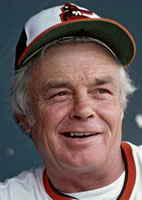
Earl Weaver

John Lowenstein |
Earl Weaver of the Baltimore Orioles was one of the first managers to rely heavily on statistics when making decisions during games. From 1977-82, the team statistician, Charles Steinberg, prepared index cards for Earl to refer to during contests.
A particularly effective use of Steinberg's work occurred during the first game of the 1979 ALCS against the Angels. John Montague was warming up in the bullpen in the bottom of the tenth with the scored tied 3-3. Since the right-handed reliever had been acquired from Seattle late in the season, Earl didn't have a card for him. So he called Steinberg in the press box and asked him to look up Montague's stats. Weaver sent his daughter, a stadium attendant, to get the card from Steinberg. She hurried downstairs through the Orioles' clubhouse past a naked Jim Palmer (she shielded her eyes) to give the card to her father. Seeing that John Lowenstein owned Montague, Earl sent Lowenstein to pinch hit. John responded with a 3-run walk-off homer.
Steinberg was not your usual statistician. He began working for the Orioles in high school. He earned his doctorate from the University of Maryland dental school in 1984 and served as the Orioles' dentist while continuing to work in the front office. A Renaissance man, he created the club's first video production department and first customer service department. Steinberg won an Emmy Award for his television production of the story of the 1998 NL champion Padres, and a Telly Award for his video on the 1989 Orioles. He also appeared in "Fever Pitch," a fictional movie that featured the 2004 Red Sox winning their first World Series title in 86 years.
In November 2007, the Los Angeles Dodgers hired Steinberg as their chief marketing officer, undoubtedly making him the first dentist to ever hold that position for a major league team.
|
- In the 1930s, manager Casey Stengel polled Brooklyn Dodgers fans to come up with his lineup.
- With the 1972 Detroit Tigers in a slump, Billy Martin pulled names out of a hat to determine his batting order for Game One of a doubleheader against the Cleveland Indians. His random lineup won 3-2. He went back to his usual lineup in the nightcap and lost 9-2.
- On May 3, 1989, Red Sox manager Joe Morgan filled out his lineup card thinking that the White Sox starter, Shawn Hillegas, was a southpaw. Boston broadcaster Joe Castiglione asked Morgan just before they taped the pregame show why right-handed hitting C Rick Cerone was playing instead of lefty Rich Gedman. Morgan replied that Hillegas was a lefty. When informed that he was indeed a RHP, Joe replied, "Uh oh, I ****ed up." Cerone made Morgan look like a genius by hitting a 3-run HR off Hillegas to win the game.
- In 2003, Arizona manager Bob Brenly used 140 different lineups in the first 155 games. His tinkering didn't help much as the Diamondbacks finished 16 1/2 games out of first.
Reference: "Between the Lines," Steve Wulf, ESPN the Magazine |
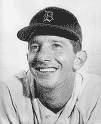
Billy Martin
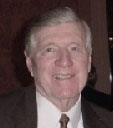
Joe Morgan |
Historic Day at the Polo Grounds
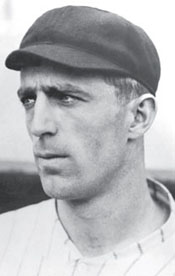
Fred Merkle |
The 12,000 fans who attended the Saturday, May 13, 1911 game between the New York Giants and the visiting St. Louis Cardinals at the Polo Grounds saw their hometown heroes set two records that stand to this day.
- The Giants tallied a record 10 runs in the bottom of the first before the first out was recorded. New York scored a total of 13 in the inning with six knocked in by 1B Fred Merkle.
- With the Giants so far in front, manager John McGraw replaced his ace Christy Mathewson in the top of the second with Rube Marquard. Rube proceeded to strike out 14 men in eight innings, which is a record for relievers. Under the scoring rules of the day, Christy still got credit for the win since starters did not have to pitch a minimum of five innings to record the victory.
Reference: Baseball Bits, Dan Schlossberg |

Rube Marquard |
|
Casey Stengel was famous for butchering the English language. One of his meandering soliloquies occurred during spring training of 1962, the first year of the expansion New York Mets, when Casey was asked about his lineup. After he revealed the names of some of his starters, he continued:
And in LF we have a splendid man, and he knows how to do it. He's been around, and he swings the bat there in LF, and he knows what to do. He's got a big family, and he wants to provide for them, and he's a fine outstanding player, the fella in left field. You can be sure he'll be ready when the bell rings – and that's his name, Bell.
It obviously took Casey awhile to remember the name of Gus Bell, who had just finished nine solid years with the Cincinnati Reds. And his "big family" included son Buddy, who played in the majors from 1972-1989, mostly at 3B, and has managed three different clubs. Also Buddy's son David played IF with several teams from 1995-2006, and another son, Mike, played briefly with Cincinnati in 2000.
|
 Gus Bell |
|

